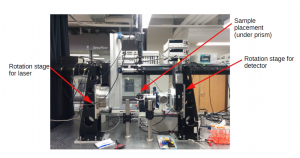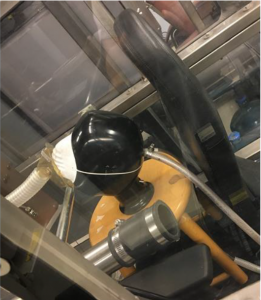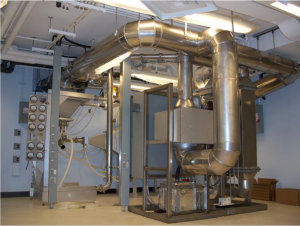The objective of the Public Health Diagnostics Initiative (PHDi) is to build a multi-disciplinary and cross-Faculty network of investigators to address a range of pressing global public health challenges with novel solutions that are both affordable and scalable. Our projects look at air quality, food and water safety, soil quality, and mycotoxin detection.
Particulate matter sensing: Soot, or black carbon (BC), is one of the major components of atmospheric particulate matter (PM), which can cause adverse health impacts and contribute significantly to climate change. Poor understanding of BC sources and concentrations is the main obstacle to reducing BC emissions. Current commercial BC sensors remain too costly to deploy widely. In this project, a smartphone camera was used for a fast, cost-effective, and easily accessible deployment to quantify colour information (RGB values) of PM collected on filters. These were photographed with a smartphone, and an image processing program was developed, taking different light conditions and different devices into account. Two RGB-based linear models were then trained to estimate BC and elemental carbon (EC) loadings using BC samples collected from Ontario and EC samples obtained in Beijing. This method successfully predicted BC/EC loadings for various sources of BC. The use of a smartphone makes it possible to popularize a BC/EC sensor to the public.
Low-cost diagnostic meter to assess food drying safety in developing countries: Moisture-related microbial growth is a key factor contributing to food spoilage in developing countries. Dehydration or drying of food reduces the moisture content supporting this microbial growth, thereby addressing this problem. The moisture content of food, related to water activity, is therefore a key factor influencing the quality of storage thereby reducing postharvest loss. However, there is a lack of efficient low-cost tools to assess the sufficiency of small-scale food drying operations in developing countries. Through this project, a model using a thermal imaging process was developed to determine the moisture content of dried Royal Gala apples based on their cooling rate. This model was used to check if the moisture content of the sample was below 10% to ensure food safety. To develop this model, a series of tests were conducted to explore the relationship between cooling time and sample moisture content. The thermal imaging technique was useful to detect a difference between the selected safe range of wet basis moisture (9-11%) and a higher moisture content range (15-17%).
Bacteria testing of water: Diarrheal disease poses a significant global health concern, particularly in low and middle-income countries. It is globally the second leading cause of death to children under five. In this project, a microfluidic device was designed, which couples with a portable paper microscope, called a Foldscope, allowing for a low-cost bacteria capture and counting system. This allows for a portable and low-cost solution to viewing captured molecules, particularly E. coli bacteria, which can alert the user to the drinkability of their water supply.
Mycotoxin detection: Mycotoxins are produced by fungi and can have adverse effects on human and animal health. Exposure to mycotoxins occurs through air or food and feed. In this project, a sensor is under development to detect multiple mycotoxins. It is designed to be a low-cost, user-friendly, rapid diagnostic system.
Soil nutrient testing: Soil nutrient levels need to be maintained at ideal levels to sustain or increase crop yields and make optimal use of fertilizers. The absence of soil nutrient level analysis leads to overuse of fertilizers, which is not only economically wasteful, but also causes environmental damage. Currently, soil nutrient test kits are very expensive for many in developing nations, are often time-consuming, and/or lack accuracy/precision. Through this project, a sensor that quantifies the concentration of nitrite and other macronutrients in soil was developed, using gold nanoparticles and organic probes, which limits the materials needed and allows for a cost-effective method of measuring macronutrients.



